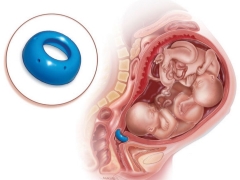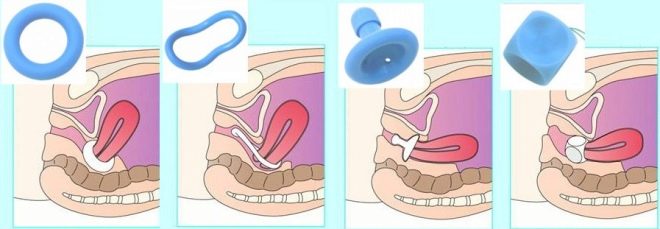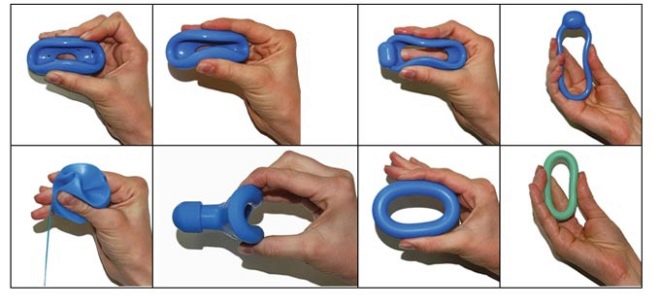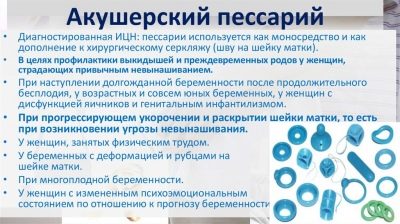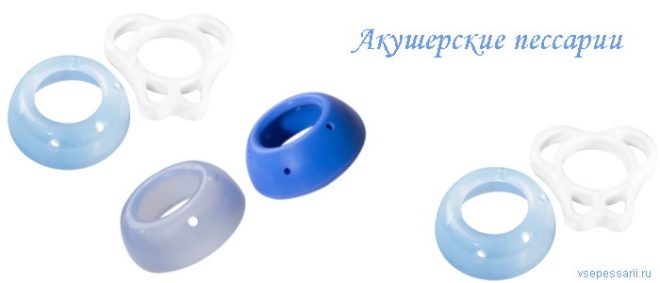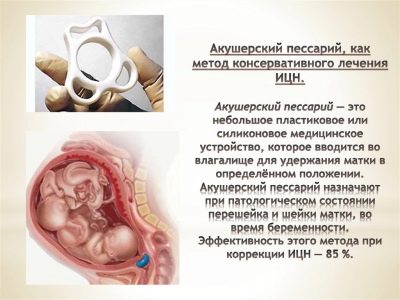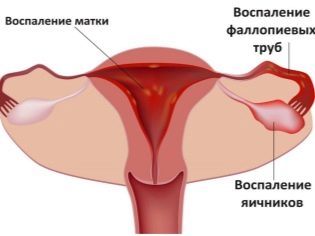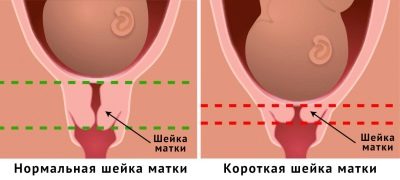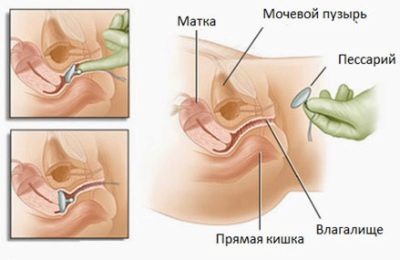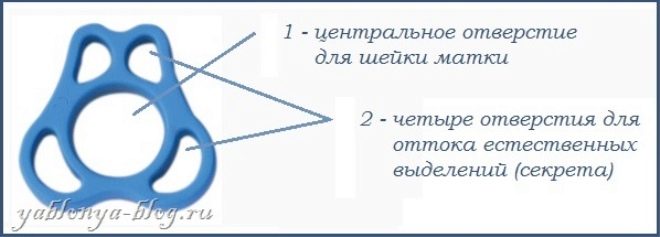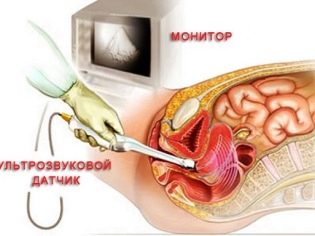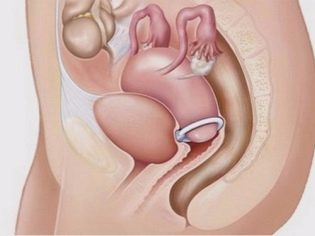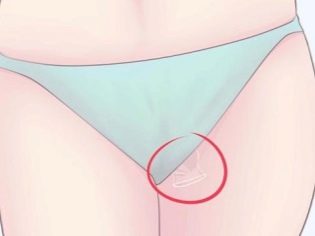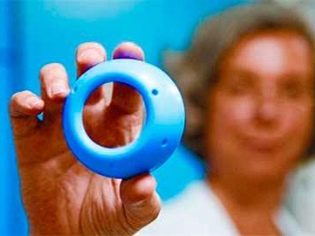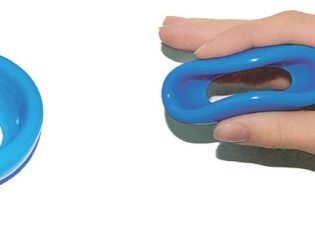Why establish an obstetric pessary during pregnancy and when it is removed?
When a gynecologist advises a pregnant woman to put an obstetric pessary, it often causes fear and distrust in her. However, in the case of a complicated pregnancy, using this device, you can avoid spontaneous abortion and give birth to a healthy child. What is an obstetric pessary? What are the indications for installing it? Can it harm the health of the expectant mother or fetus?
What it is?
The Latin term "pessarium" literally translates as "vaginal." Although it is believed that the name of this device comes from the Greek word "pessos", which means "round game stone." It is precisely because of its shape that the obstetric pessary is often called the gynecological ring. However, in modern clinical practice, pessaries of various forms and designs are widely used. This is determined by their specific purpose.
It is worth noting that these devices are used in different areas of medicine, but this material will focus on the so-called unloading pessaries, which are used in obstetrics for the correction of physiological defects of women complicating the course of pregnancy.
Obstetric pessary is a small ring-shaped device for medical purposes, made from hypoallergenic material. Features of its design exclude the possibility of injury to the genitals of a pregnant woman both during the period of wearing and during gynecological procedures. There are also some modifications of pessaries that are used in gynecology and urology, but in special cases they can also be used in obstetrics.
During pregnancy, an unloading obstetric pessary is installed to preserve it in the event of a real threat of spontaneous abortion. This device is a more perfect alternative to surgical correction of the cervix.
Also, indications for the installation of a pessary are the opening of the cervix during “habitual miscarriage” and the threat of abortion of multiple pregnancies.
Objectives of use of gynecological rings:
- keeping the cervix closed for a certain period of gestation;
- reduction of pressure on the cervix.
The feasibility of setting the gynecological ring is determined by the doctor who is watching the pregnancy. The results of an objective examination of the cervix of the uterus, as well as data from a number of instrumental studies are taken into account. The type and form of the obstetric pessary is also chosen by the gynecologist on the basis of the patient's individual anatomical features.
In the gynecological and obstetric practice, pessaries began to be used not long ago. However, this method of preserving pregnancy has already shown greater efficiency. (more than 80% of cases, pregnancy ends successfully).
Before the pessary was invented, the doctors had to adjust the imposition of sutures on the cervix when a woman had threatening conditions, and this manipulation is quite complicated and is performed under anesthesia. In addition, it could be feasible not earlier than after 20 weeks of gestation. This is due to the fact that in the earlier periods, the toxic effect of anesthesia could have a very negative effect on the intrauterine development of the baby.A pessary, by contrast, can be installed before 20 weeks.
Before the procedure itself, it is necessary to make sure that the future mother does not have any urogenital infections. In case of detection of the inflammatory process, an appropriate therapy should be carried out, after which a gynecological ring should be installed.
Kinds
There are several types of pessaries:
- The first type of device is installed, mainly, for first-timer women, as well as for those who have had no more than two genera. At the same time, DShM should not be more than 32 mm, and VVTV should be 6.5 cm.
- The second type is used for women with the same ancestral history, but only with other anatomical data. In this case, DShM should be no more than 3 cm, and VVTV - 7.5 cm.
- The third type is indicated for women who are expected to have a third (or more) birth. Suitable physical parameters: DSM - from 3 to 3.5 cm, VVTV - from 7.5 to 8.5 cm.
The required type is selected depending on the anatomical parameters of the patient. It takes into account its DSM - the diameter of the cervix, and VVTV - the amount of the upper third of the vagina.
In each situation, an individual approach to the selection of the desired obstetric pessary is applied. It is necessary to take into account all the anatomical features of the structure of the genital tract of a particular patient.
It is extremely important that the product is made of environmentally friendly material that is not capable of provoking the development of an allergic reaction. The most widely used in clinical practice are pessaries made of silicone. Also popular gynecological rings made of flexible plastic. The pessary has a smooth surface, which excludes the possibility of damage to internal organs during the period of wear.
The pessary is intended for single use only. The shelf life of such products is limited to the period while it is sterile.
Indications and contraindications
In obstetrics, a pessary is used to prevent cervical dilatation, which can occur much earlier than expected. In other words, with the help of this device it is possible to prevent the development of spontaneous abortion in early and late gestation. Often the pessary is established for women with multiple pregnancies.
Direct indications for installing a gynecological ring are the following pathologies:
- cervical insufficiency (ICS is a type of pregnancy complication, which is characterized by weakness of the cervix and premature opening of the amniotic bladder. The result of this pathology may be spontaneous abortion, which occurs before 22 weeks);
- preventing the development of IDS (if the patient was diagnosed during a previous pregnancy);
- early conducted ineffective surgical treatment of ICS.
Through the use of a gynecological ring, it is possible to keep the cervix closed during the entire period of gestation, and also to prevent its softening, since the pessary can reduce the intensity of pressure on it.
In addition to its direct purpose, the vaginal ring may, to some extent, have a psychological effect for women who are very worried about the outcome of pregnancy, thereby unconsciously increasing the risk of the threat of spontaneous abortion. It is much easier for such patients to cope with their anxiety if they know that they have an obstetric pessary installed.
Like most other medical procedures, the installation of a gynecological ring has a number of contraindications. Among them:
- “Missed abortion” (prolonging pregnancy does not make sense);
- the presence of pathologies in the fetus that are incompatible with life and are indications for artificial interruption of pregnancy for medical reasons;
- bleeding from the genital tract of a pregnant woman, appearing in the first or second trimester;
- inflammatory diseases of the vagina or cervix;
- damage to the amnion.
More about IDSS
During the normal course of pregnancy, the cervix must be filled with a viscous mucous plug, thanks to which the canal remains airtight until the very moment of birth. When labor activity begins, the canal opening gradually opens, resulting in the natural expulsion of the fetus through the birth canal.
If the cervix was previously deformed as a result of the influence of any factors, then it cannot “withstand” the load, which increases with the course of pregnancy. Because of this, the cervical canal opens without intended cuts.
The causes of cervical insufficiency can be:
- a cone biopsy procedure previously performed by the patient;
- chronic inflammatory diseases of the urogenital system;
- excessive exercise;
- congenital malformations of the uterus;
- posttraumatic deformation of the uterus tissue structure.
Installation
The procedure itself setting gynecological ring is not long. Before you start the manipulation, the patient must empty the bladder. The doctor bends the pessary by a certain method and inserts it into the vagina. Next is the direct installation of the ring on the cervix.
So that the process of introducing this product into the vagina does not deliver the patient additional discomfort, it is pre-lubricated with a sterile moisturizer.
The gynecological ring has a base that allows you to securely fix it in a certain position. The main part of the product is directed towards the rectum, a smaller part - to the pubic symphysis. Pessary closed ring restricts the cervix, which prevents its premature disclosure. He also in his design has several special holes that are designed for the outflow of secretions.
As already mentioned, the edges of the pessary do not have sharp ends. This form eliminates the possibility of injury to the internal organs of the woman, and also allows her to not feel discomfort during the period of wearing.
When the ring is properly installed, the woman should not be hurt in the lower abdomen or in the perineum. If after the procedure no discomfort is observed, then there is no need to carry out other additional manipulations.
The algorithm for the subsequent actions of a pregnant woman after the installation of an obstetric pessary is as follows:
- regular examination of the vaginal microflora (optimally 1 time in 20 days) to prevent the development of inflammatory disease in the genital tract;
- Every month, it is necessary to perform an ultrasound scan of the cervix to assess its condition;
- Every two weeks a pessary is treated with an aseptic solution to prevent the development of colpitis. Pre-remove the product for processing is not required;
- abstaining from sexual activity while wearing a gynecological ring;
- strict dosing of physical activity.
Each woman, due to her uniqueness, has a different degree of pain perception. That is why reviews of subjective sensations during the installation of the pessary are rather controversial.
To reduce possible pain 30 minutes before the manipulation, it is better to take an antispasmodic. Administration of analgesics in this case is not shown.
Complications
Statistics show that the occurrence of complications after the installation of a gynecological ring is a rare occurrence. However, there are still cases when, as a result of a violation by the doctor of the technique of performing this manipulation, the patient has these or other complications.For example, if the uterine ring is poorly fixed, then it may move or fall off altogether, which may give an impetus to the development of colpitis.
Removal of the pessary ahead of schedule may be due to damage to the integrity of the fetal membranes before the intended end of gestation, as well as in the case of premature birth. In addition, endometritis can cause spontaneous excretion of the pessary.
In addition to these complications, the negative consequences of improper installation of the gynecological ring may be:
- ulcerative lesion of the vaginal wall;
- bleeding from the genital tract;
- deformation of the vaginal walls. In severe cases, fistula may be formed between the vagina and the rectum;
- constipation;
- unnatural protrusion of the rectum from the vaginal wall.
The nature of the discharge after the establishment of the pessary
If the procedure for setting the gynecological ring has passed in compliance with all the rules, then the appearance of any unusual discharge is unlikely. But there are situations when they do appear. It is necessary to inform the gynecologist without delay about the occurrence of non-characteristic vaginal discharge, for example:
- dark brown;
- bright red;
- yellowish with green splashes;
- copious watery.
Spotting or "daubing" usually appears immediately after setting the ring. Their presence does not always indicate any threatening condition, but it is still worth notifying the attending physician about the appearance of such a symptom.
Yellow discharge suggests an infectious process in the patient's urogenital system. This condition requires urgent treatment.
Watery discharge may be a sign of amniotic fluid leakage. Also, this symptom may be a sign that the immunity of a pregnant woman rejects the "alien object".
When to shoot?
If after the installation of the ring the pregnancy passes without complications, then it is removed at about 37-38 weeks, because after the onset of this period, the fetus is considered full-term.
In some situations, the gynecologist may decide to remove the gynecological ring earlier than at 37-38 weeks of gestation. These cases include:
- the need for emergency delivery (if there is a real threat to the life or health of the expectant mother);
- the development of an infectious process in the patient's reproductive system;
- amnion infection;
- amniotic fluid rupture;
- the beginning of labor activity.
How does it affect?
A pregnant woman, whom the gynecologist recommended to establish a gynecological ring, should at least in general terms understand the mechanism of the effect of this device on the body. Because he is able to influence not only the course of a pregnancy, but also its psycho-emotional status.
The following is a list of the main mechanisms of influence on the female body of this device, based not only on clinical studies, but also of the numerous reports of women who had a pessary installed during pregnancy:
- Helps to reduce the load on the cervix due to the displacement of intrauterine pressure.
- Optimal distributes the pressure of the fetus on the walls of the uterus, which occurs as a result of its venous-oblique location.
- Due to the special fixation of the device (back), natural cervical sacralization can be achieved.
- The gynecological ring tightly borders the cervix to the walls of the central opening.
- Prevents premature mucosal discharge of the tube.
- When a woman is wearing a ring, libido decreases, which to some extent reduces the risk of infection in the genital tract.
- Obstetric pessary reduces the likelihood of developing thrush.
- In most cases, the setting of the discharge gynecological ring contributes to the stabilization of the emotional state of the future mother.
History reference
In order to create an obstetric pessary the way it looks in our time, mankind went for more than one century. In ancient times, physicians used primitive devices, which had the form of a ring, to exclude the prolapse of the pelvic organs.
Even contemporaries of Hippocrates used ring-shaped devices in obstetrics and gynecology. The description of the analogues of such products are also found in ancient Egyptian papyrus. Later, natural materials such as pomegranate were used as pessaries. For fixing the cervix was used its empty half-bowl shape. In the era of the early Middle Ages, pessaries were widely used in medicine, representing a woolen swab soaked in a medicinal substance.
In the 17th century, an obstetric ring shaped pessary was first used. This invention belongs to the famous Renaissance scholar Ambroise Pare.
Toward the second half of the 19th century, rubber pessaries were used in obstetrics. At the same time, the Hoxhaus pessary was developed, named after its author. This product had an oblong shape, which to a greater extent corresponded to the anatomical shape of the vagina.
In the middle of the last century, obstetric pessaries made of rubber were proposed to be replaced by plastic ones. Later, scientists developed gynecological rings made from an elastic material - silicone, which was hypoallergenic.
Despite the fact that in recent years in clinical obstetrics there have been a large number of discoveries related to the development of new methods of treating various complications arising during pregnancy, there are still debates about the choice of optimal methods for the treatment of cervical insufficiency and other pathologies, capable of provoking cervical weakness.
However, almost all leading experts in this field agree that obstetric pessary is “number 1” in preventing spontaneous abortion in women with such a diagnosisThis is achieved thanks to its availability, simple installation and the minimum number of possible side effects.
See below for details on the Yunona obstetric pessary.
